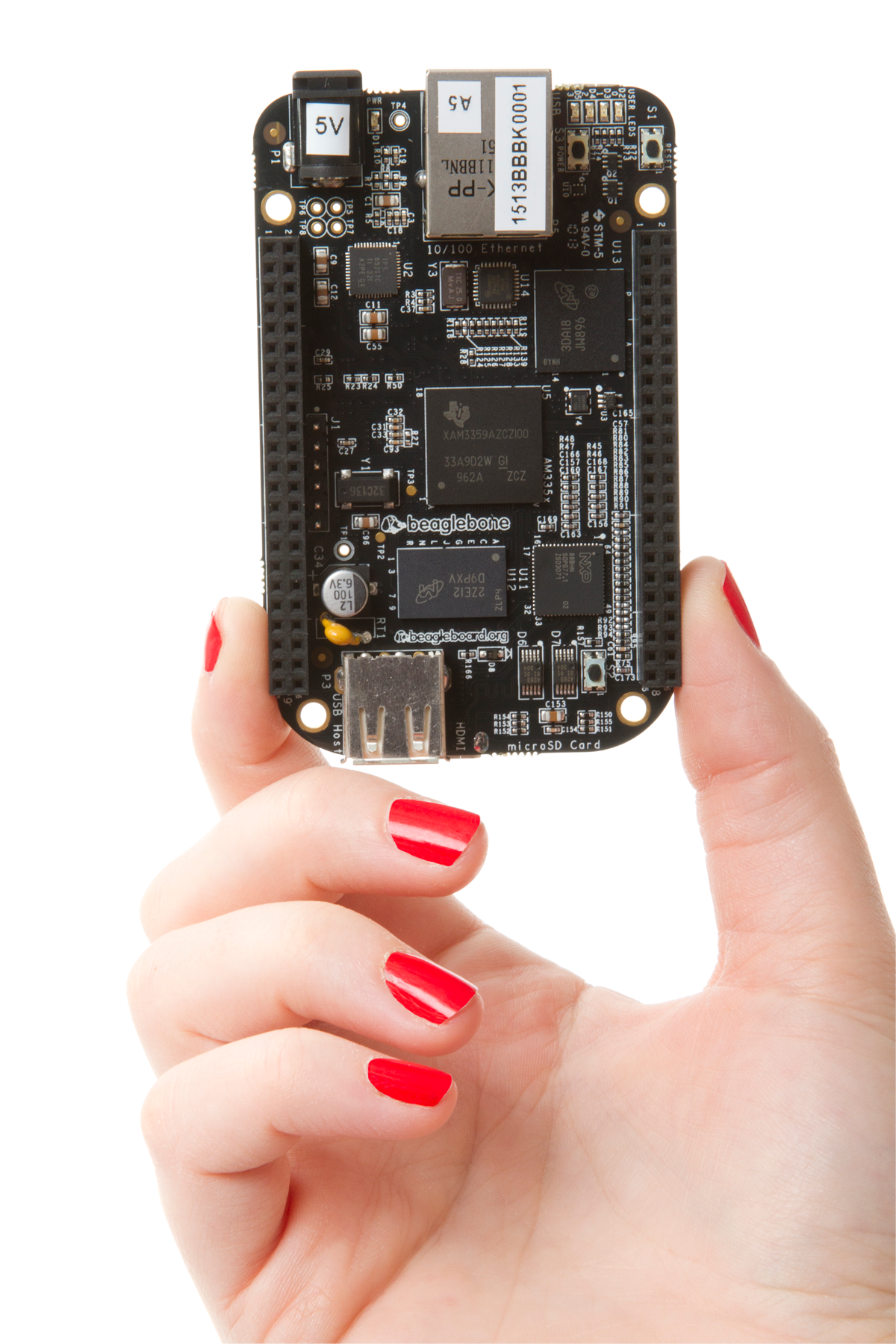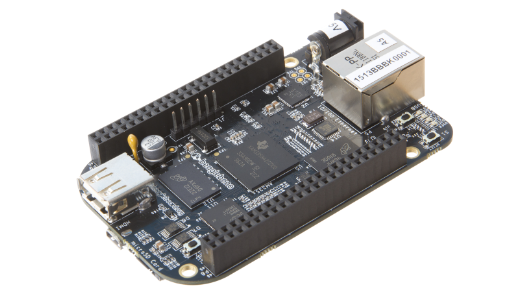Jason Kridner is the co-founder of BeagleBoard.org, where he has helped create open source development tools such as BeagleBone Black, BeagleBone, BeagleBoard, and BeagleBoard-xM. Kridner is also a software architecture manager for embedded processors at Texas Instruments (TI).

During his 20-year tenure with TI, Kridner has become an active leader in the open source community. He has engaged audiences at a variety of industry and hardware and software developer shows, including Maker Faire, Embedded Linux Conference, Android Builders Summit, OSCON, CES, Design West and Linux Collaboration Summit.
The goal for BeagleBoard.org is to inspire anyone—from kindergarteners to Kickstarter developers—to learn about how computers can be used in an everyday ways to remove barriers to learning, prototyping, and production. Success is when even a child can plug in the board, intuit what he or she can build with it, and share his or her designs with the world.

What are some of your best sellers?
Thanks to the low retail sales price of $45, the BeagleBone Black is the best-selling board design from BeagleBoard.org. All boards continue to be available and continue to be sold every day, thanks greatly to the amount of educational materials built around them. Some people are particularly interested in the DSP capabilities and additional USB host ports of the BeagleBoard-xM. Some people are interested in the built-in low-level debug capabilities of the original BeagleBone. Still, BeagleBone Black has now outsold all of the other designs combined.
We covered OpenROV in March 2012. What's new with this project?
OpenROV was designed and built around the original BeagleBoard and has now moved to the newer BeagleBone Black. We share with people in our developer communities, supporting each other with solutions to common challenges. OpenROV initially worked fully independently of BeagleBoard.org as is typical of projects using the boards or designs, but we now do whatever we can to listen to their needs moving forward, including the need they had to reduce the cost of the BeagleBone used in their design.
Tell us about your teaching video series on YouTube. Who uses it?
You must be referring to Dr. Molloy’s teaching video series. It gets a lot of use from students and hobbyists interested in building just about any physical computing, image processing, or miniature networked device solutions around BeagleBone or BeagleBone Black, but it also has a fair amount of reference from engineers looking to save time learning to solve common setup tasks. I absolutely recommend this excellent series that has been watched by more than 100,000 viewers.
How does Replicape, a 3D printer cape for BeagleBone work?
The Replicape provides 5 stepper motor drivers under the fast, fine, and hard-real-time control of the two 200-MHz Programmable Real-time Units (PRUs) embedded in the TI Sitara™ AM335x processor on BeagleBone and BeagleBone Black. These eliminate the need to interrupt the primary 1-GHz ARM® Cortex®-A8 CPU that runs Linux, provides network/media connectivity and is even able to produce live renders and slicing of the model to be printed, features not common to 3D printers today that more generally rely on a connected PC to provide those functions. This high-performance combination of low-level control and high-level functionality makes the Thing Printer built around the Replicape stand out from its peers.
In addition to the 5 stepper motor drivers and performance/connectivity/preview advantages that come from using BeagleBone Black, Replicape also includes 3 high-power MOSFETs for extruders and hot plate, 3 medium-power MOSFETs for fans, 3 analog input ports for thermistors, 6 inputs for end-stops, a 1-wire bus for up to 10 additional temperature sensors and a single 12-24V input. Each of these components and interfaces provide critical functionality for building 3D printers, eliminating the need for additional electronics.

Walk us through the user experience on BeagleBoard.org.
Among open hardware platforms, the experience with BeagleBone Black stands out as a new degree of simplicity, and we continue to improve the experience. Unlike some other platforms, there’s no need to go to the Internet for instructions or software downloads. There’s no need to program any removable storage before you can get started. Simply plug the board in, and you are ready to get started. If drivers are required to establish a network connection over the provided USB cable to your Windows, Mac, or Linux computer, they can be installed directly off of the virtual flash drive the board serves up to your computer. Once the drivers are installed, the network connection serves up a web page with documentation about the hardware and software. The board uses your web browser to serve up a development environment with an editor for creating simple programs to talk to various hardware elements using digital, serial, and analog signals. You can be up and talking to switches, LEDs, temperature sensors, light sensors, motors, and much more within minutes of removing the board from its box.
How has the open hardware landscape changed over the past year? The past month?
Looking over the last year, the announcement of the Arduino Tre, a collaboration between BeagleBoard.org and Arduino, is probably the most significant impact on the landscape. The Tre will provide the most important performance, connectivity and networking capabilities of BeagleBone Black along with the simplicity of Arduino.
Over the last month, I have to say I’m most excited about what I’m seeing regarding on-line education for hardware developers. Of course, many of your readers are likely familiar with sites like Khan Academy and Code Academy, but getting involved with hardware always requires a bit more investment. Chris Gammell quitting his job to work full-time on his for-pay electronics course, Contextual Electronics, stands out to me. Looking at free courses, the highly popular Georgia Tech-created course on "Control of Mobile Robots" hosted on Coursera makes good use of the BeagleBone Black in the hardware portion and provides an excellent treatment of both theory and practice. Both these individual programs and the trend they represent will have huge impacts over the next year.
What's in store for BeagleBoard.org in 2014? What's in store for open hardware in 2014?
As I mentioned, I believe the trend toward more compelling online trainings for hardware development will accelerate in 2014. The snowball effect means that many people will be getting more than a superficial introduction to advancing the state of open hardware for all of us.
The continued challenge for open hardware developers, despite the greater educational opportunities and crowdfunding solutions that have emerged, will continue to be managing a supply chain beyond building the first few prototypes. I look most forward to surprises in 2014 that will enable all of these newly-capable developers to not only have the money to build their product concept, but to also know how to work with partners and deliver to their admiring fans.
For BeagleBoard.org and BeagleBone Black in particular, we are shifting the Linux distribution included on the board to Debian and upgrading our to version 3 of the Cloud9 IDE, which I see as a significant improvement with Python support, better shell capabilities, and improved debugging. We are also starting to include other libraries to program the board’s physical I/Os in Python, C/C++ and sketches. Upping board capacity and improving the software experience will be major focus items that our community of users should notice and help direct. Among the most visible and interesting development activities will be happening as part of the 2014 Google Summer of Code, for which the BeagleBoard.org Foundation is an approved mentoring organization and for which some number of students will get paid for their open source software development work. With at least half a dozen Beagle-related books coming out and popularity at an all-time high, 2014 could easily shape up to be the most exciting year for BeagleBoard.org yet!
View the complete collection of Open Hardware Week articles.








1 Comment